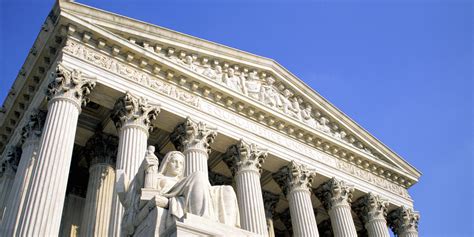
A Supreme Crackdown on the Environmental Protection Agency?
Is the agency becoming a “central energy planning authority”?
The Supreme Court may be on the verge of clawing back some of the sweeping regulatory authority it unwisely gave the U.S. Environmental Protection Agency 15 years ago at the height of Al Gore-promoted global warming hysteria.
This about-face by the high court could come if conservative justices have the courage to do the right thing in West Virginia v. EPA, which the court heard Feb. 28. In all, 19 states are challenging how much power the federal Clean Air Act gives the agency.
West Virginia Attorney General Patrick Morrisey, a Republican leading the legal challenge, told this writer recently he is concerned the EPA is transforming itself from “an environmental regulator into a central energy planning authority.”
Morrisey said this case is “so important because it gets to the fundamental question as to who gets to decide the major questions of the day in our society.”
“Should major issues of the day be decided by Congress, or by an unelected bureaucracy that has no accountability to the American public?” he said.
Admittedly, whether the six conservative justices on the nine-member court will do the right thing is a pretty big if, especially given their fondness for fetishizing stare decisis, instead of putting the U.S. Constitution first.
A year after the Gore-centered agitprop film, An Inconvenient Truth, began brainwashing audiences, the Supreme Court ruled 5-4 in Massachusetts v. EPA (2007) that the EPA is free to regulate so-called greenhouse gas emissions, including carbon dioxide, as “air pollutants” under the Clean Air Act.
The high court bought into Gore’s nonsense big time, declaring climate change “the most pressing environmental challenge of our time.”
Propaganda disguised as science found its way into the majority opinion. The court cited the findings of the dubious Intergovernmental Panel on Climate Change (IPCC), and accepted that “the rise in sea levels associated with global warming has already harmed and will continue to harm Massachusetts.”
Carbon dioxide was to blame, the majority claimed.
A well-documented rise in global temperatures has coincided with a significant increase in the concentration of carbon dioxide in the atmosphere. Respected scientists believe the two trends are related. For when carbon dioxide is released into the atmosphere, it acts like the ceiling of a greenhouse, trapping solar energy and retarding the escape of reflected heat. It is therefore a species—the most important species—of a ‘greenhouse gas.’
But those who still cling to common sense in this irrational age have long ridiculed the designation of carbon dioxide, the invisible gas people push out of their lungs when breathing, as a pollutant.
After all, carbon dioxide is life – without it, there would be no photosynthesis, which is essential to the growth of plants.
The majority opinion in 2007 was written by the late Justice John Paul Stevens. His opinion was joined by current Justice Stephen Breyer, retired Justices Anthony Kennedy, David Souter, and the late Justice Ruth Bader Ginsburg.
The dissenters from this jurisprudential rubbish of were Chief Justice John Roberts, current Justices Clarence Thomas and Samuel Alito, and the late Justice Antonin Scalia.
Breyer, who is retiring at the end of the court’s present term, seems unlikely to flip on his comrades because it would hurt his legacy.
But if the three dissenters still on the court hold fast, two of the three new conservative justices – Neil Gorsuch, Brett Kavanaugh, or Amy Coney Barrett, could overturn or at least weaken Massachusetts v. EPA.
Unless he was playing devil’s advocate Feb. 28, Kavanaugh may be on-board with the 19 states’ challenge under the Clean Air Act.
“Congress must speak clearly if it wishes to assign an agency decisions of vast economic and political significance,” the Trump appointee said during oral arguments.
The court is skeptical when agencies “claim to have found in a long extant statute an unheralded power to regulate a significant portion of the American economy,” Kavanaugh said.
Alito also seems eager to curb EPA authority.
The justice told U.S. Solicitor General Elizabeth Prelogar that her approach would not impose any “concrete limitations” on EPA’s powers.
“What your interpretation of the statute claims for EPA is not a technical matter,” Alito said.
“It is not a question of how to reduce emissions from particular sources, but you are claiming that the interpretation gives you the authority to set industrial policy and energy policy and balance such things as jobs, economic impact, the potentially catastrophic effects of climate change, as well as costs.”
We’ll probably find out in May or June how the justices ruled.
Matthew Vadum — Bio and Archives
Matthew Vadum, matthewvadum.blogspot.com, is an investigative reporter.
His new book Subversion Inc. can be bought at Amazon.com (US), Amazon.ca (Canada)
Visit the Subversion Inc. Facebook page. Follow me on Twitter.
From canadafreepress.com